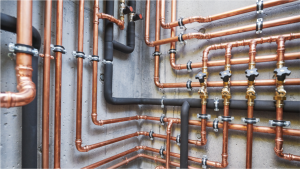Plastering work, which is a thin layer made of mortar that is applied to the masonry, acts as a damp-proof coating over the brick masonry. Solid plastering in auckland provides a smooth, hardened surface that covers the masonry. This enhances the building’s appearance. Plastering is used to protect the surface from the elements, conceal defects in masonry, cover porous materials and provide a smooth surface suitable for painting.
Plastering
What are the Standard Specifications for Plastering Work?
These are the plastering specifications according to the American, British, and Indian standards.
American Standards:
- ASTM C926 Standard Specification For Portland Cement-Based Plaster
New Zealand Standards:
- NZS 4251-1 (2007) – Solid plastering – Cement plasters to walls, ceilings, and soffits [Licensed Building Practitioners Regulations 2007, Building Code Compliance Documents B1(AS1)), B2 (AS1), E2 (AS1)].
European Standards:
- BS EN 998-1 Specification of mortar for masonry – Part 1: Rendering, plastering mortar.
Indian Standard (BIS Codes):
- IS 383 Specification of coarse and fine aggregates from natural sources for concrete.
- IS 1542 Specifications of sand for plaster
- IS 2645 Specifications of integral cement waterproofing compound
- IS 8112 Specification 43 grade OPC
- IS 269 Specification 33 grade OPC
- IS 1489 Specification Portland Pozzolana Cement
Material used in plastering must be tested according to specification. Tests should be done on sand for organic impurities and silt content. Also, they must test the size and bulking of sand. The river sand that flows through a plane area will not be suitable for construction, as it must fall within the bounds of the grading zone IV.
What sequences of works are required before you start the plastering work?
Before you can begin the internal plastering, it is important to complete the internal brick masonry. External plastering requires that you complete the floor’s periphery brickwork first. Outside plastering should always begin at the top and end at the bottom. Ceiling plaster should also be completed prior to wall plastering.
How do you manage the materials of plastering work?
It is measured in areas. It is the area of plastering work measured in square meters. This is calculated by multiplying the length and height of a wall’s surface. C:M 1:3 uses 7.5kg cement and 0.015m 3 sand to make 12 mm thick plaster. C:M 1:3 uses 11.5kg cement and 0.024m 3 sand to make 20mm thickness.
What precautions should you take when scaffolding plastering work?
To meet the specific needs of each site, proper steel/wooden scaffolding should be used for interior plaster. It is necessary to construct double-stack steel scaffolding for the exterior periphery. This will allow it to withstand any loads that may be placed on it. It must be free from work and should have two sets vertical supports.
What precautions should you take when integrating services into plastering work?
It is important to integrate services such as HVAC, electric conduit, or plumbing lines. All Grooves and Sleeves shown in the drawing must be completed in the correct line, position, and level or as directed. It is important to properly finish the sleeves of scaffolding and cure them properly. This will reduce the possibility of structural leakage.
What precautions should you take during the Plastering Workmanship?
- Proper surface preparation is required before plastering can be begun. It is important to properly rout the joint of the brick wall. Brushing and scraping should remove dust and loose mortar. Before plastering can be started, the surface must first be thoroughly cleaned with water.
- The sieve should screen the sand and the cement mortar should be proportioned according to specification.
Sand screen through the Sieve
Mortar should only be used within 30 minutes of mixing. It should not be mixed with excessive mortar at once. Mortar must be used within 30 min of the addition of water. If it is not, either discard the mixture or add additional cement.
Find out more about readymade mortar.
- To prevent cracks, 150mm wide chicken mesh should cover the wall and column/beam junctions. For fixing chicken mesh, nails should be used 150mm from center to center.
- Interior cement plaster must have a floating coat of cement.
- Exterior plaster 18mm thick must be applied in two coats. You should leave the first layer, 12 mm thick, rough. Then furrow 2 mm with a scratching tool. Next, apply the second layer 6 mm thick.
- To give the surface a smooth finish, use a trowel or a wooden float.
- You should test it frequently as you work with a straight edge no less than 2.5m in length and plumb bobs. Always verify line, level, and plumb of any vertical or horizontal edge.
How do you check the plastering work?
- Before you begin plastering, it is important to prepare the surface properly.
- It is important that plaster materials conform to IS codes and that water cement ratios are checked.
- It is important to check the level marks. All four walls should have fresh mortar for the level marks. After plastering, the room should be square or rectangular. If you do not, it will be difficult to install tiles on the floor. It will also look ugly.
- You should inspect it for smooth surfaces and straight edges.
- We must ensure that any holes found in brickwork for conduit pipes are filled with cement mortar. The mortar should also be properly cured.
Filled Holes in Brickwork for Conduit Pipes
- Also, holes made for scaffolding must be properly filled and dried sufficiently. These holes are the main source of dampness or leakage in the wall. Curing at these locations is never done.
What should you do after Plaster Work is Complete?
- At the end of each workday, it is important to clean out all doors and frames.
- The plaster should be cured within 7 days of it hardening.
- After plaster has been laid, cure will begin within 24 hours.
What safety precautions should be taken during plastering?
- A method statement must be prepared for handling, placing, and cleaning materials.
- When handling work, personal protective equipment such as safety helmet, safety belt and rubber hand gloves, rubber shoes and rubber goggles should be worn. A First-Aid kit can also be found on-site.
- When it’s done in a small area and in a dark location, proper ventilation must be provided.
- Calibration of the material transporting machine should always be checked. Any defect or error that you find on the machine must be fixed immediately. Operator must have a valid agency license.
- It is important to clean the area and maintain material. It is important to remove all materials that were not used immediately.
How can you manage or minimize the waste in plastering work?
Proper construction techniques can reduce wastage. A waste management program should be organized at regular intervals on-site. It is important to store waste materials safely and recycle or reuse them.
How do you measure plastering work?
According to IS 1200-76 (Method for measuring building and civil engineering work, P-XII. Plastering and Pointing) dimensions shall not exceed 0.01m. They should be rounded to the nearest 0.01m 2.. The plaster length shall be measured between brick walls and brick partitions. For the plaster height, the plaster height shall be measured from the ceiling or skirting to its top.
For the deduction of door/window/ventilation etc. Follows the provisions of IS Code: 1200-76.
Based on these precautions, the plasterer prepares method statements for plastering work. This will allow them to supervise the plasterer. They will be able to complete plaster work on time thanks to this tool. To be able to communicate well with the plasterer, the homeowner must know all aspects of plastering. The homeowner will feel satisfied with the plaster work if they know all the tips.









